Effective product listing optimization is the cornerstone of success for Amazon sellers. When done right, it dramatically improves visibility, click-through rates, and conversion—directly impacting your bottom line.
In this comprehensive guide, we’ll cover proven strategies and best practices for creating Amazon listings that actually convert.

Discover How To Supercharge Your Profits From Amazon & Beyond
Tech – unlock more revenue, increase efficiency & maximize profitability with integrated AI solutions
Agency Services – our ex-Amazonian team provides key insights, expertise & handles everything for you from A-Z
3PL Fulfillment Solutions – real-time inventory management connected to Eva tech across Amazon marketplaces
Table of Contents
Why Amazon Listing Optimization Matters
An Amazon product listing is much more than just a webpage—it’s your digital storefront. Each listing includes critical elements like your product title, images, description, price, customer reviews, and technical details. The quality of these elements directly impacts your success.
Here’s why optimizing your Amazon listings is crucial:
Visibility in Search Results
Amazon isn’t just a marketplace, it also functions as a search engine, using sophisticated algorithms to determine which products appear in response to customer searches. Strategic keyword optimization helps your products rank higher in search results, making them more discoverable to potential buyers.
Increased Click-Through Rate (CTR)
Well-optimized listings with compelling titles, professional images, and clear bullet points capture attention in crowded search results. This significantly increases the likelihood of shoppers clicking through to learn more about your product.
Higher Conversion Rates
Once a customer reaches your product page, a professionally optimized listing can dramatically increase conversion rates. Detailed descriptions, strategic keyword placement, and addressing customer questions through well-crafted bullet points all contribute to purchasing decisions.
Competitive Advantage
The Amazon marketplace is intensely competitive. Properly optimized listings give you a significant edge, particularly when it comes to winning Amazon’s Buy Box— the coveted position that drives the majority of sales.
Customer Satisfaction and Reviews
Comprehensive, accurate listings set proper expectations and lead to higher customer satisfaction. Satisfied customers leave positive reviews, which further enhances your product’s credibility and attractiveness to future buyers—a critical factor in maintaining Buy Box eligibility.
Compliance with Amazon’s Guidelines
Amazon maintains strict guidelines for product listings. Proper optimization ensures your products remain listed without facing penalties or removal from the platform.
Optimize Your Amazon Listings in 7 Strategic Steps
Whether you’re launching a product on Amazon or improving existing listings, these seven steps will help you create high-performing product pages:
1. Keyword Research: The Foundation of Visibility
| Focus | Why It’s Important | How to Implement |
|---|---|---|
| Understand Product and Audience | Essential for identifying relevant keywords that resonate with your target audience. | Analyze your product’s unique features and benefits, and consider the terms your audience might use to search for such products. |
| Amazon Search Suggestions | Leverages Amazon’s own data to find popular search terms. | Use the Amazon search bar to gather keyword ideas based on what Amazon suggests to its users. |
| Amazon-Focused Keyword Tools | Provides detailed insights into keyword performance specific to the Amazon platform. | Utilize tools that offer data on search volume, competition, and relevance for Amazon-specific keywords. |
| Analyze Top Listings | Learning from successful listings can guide your keyword strategy. | Observe and learn from the keyword usage in top-performing listings in your category. |
| Long-Tail Keywords | Targets niche markets and reduces competition. | Incorporate specific, longer phrases that precisely describe your product and its unique aspects. |
| Balance Volume and Relevance | Ensures keywords are effective in attracting the right audience. | Select keywords that are popular but also closely related to your product. |
| Monitor Keyword Performance | Continuous improvement of keyword strategy. | Regularly review how your keywords perform in terms of driving traffic and sales, adjusting as needed. |
| Regular Keyword Updates | Keeps your listing relevant and effective over time. | Stay informed about market trends and update your keywords to align with changing customer search behavior. |
2. Bullet Points: Clear, Compelling Benefits
| Key Element | Why It Matters | Best Practices |
|---|---|---|
| Clarity & Conciseness | Ensures information is easily digestible. | Use simple, clear language. Keep bullet points concise but informative. |
| Feature Highlight | Emphasizes product features and benefits. | Focus on unique selling points and how the product solves problems or enhances user experience. |
| Keyword Integration | Improves SEO and visibility. | Naturally integrate primary keywords relevant to the product. |
| Customer Focus | Addresses customer needs and questions. | Anticipate and answer common customer queries. Highlight benefits from a customer’s perspective. |
| Readability | Enhances user experience and engagement. | Limit the number of bullet points. Use whitespace and formatting for easy scanning. |
3. Product Title: The First Impression That Counts
| Element | Purpose | Guidelines |
|---|---|---|
| Brand Name | Establishes trust and recognition. | Begin with the brand name if it’s well-known. This can immediately catch the attention of familiar customers. |
| Main Keywords | Enhances search visibility and relevance. | Include primary keywords that accurately describe your product. These are the terms shoppers are most likely to use when searching. |
| Product Features | Highlights key attributes. | Mention important features like size, quantity, color, or specific uses, which can be decisive factors for buyers. |
| Unique Selling Points (USPs) | Differentiates your product. | If your product has a unique feature or benefit, mention it in the title to stand out from competitors. |
| Model or Part Number | Provides specificity. | For products where model numbers or part numbers are important, include these for clarity and searchability. |
| Compliance with Amazon Guidelines | Ensures listing acceptance and consistency. | Adhere to Amazon’s title guidelines in terms of length (typically around 200 characters) and format to avoid listing issues. |
| Clarity and Readability | Facilitates quick understanding. | Keep the title clear and easy to read. Avoid cluttering with too many details or using all caps. |
| Balance of Information and Brevity | Maintains engagement and effectiveness. | While being informative, ensure the title is not overly long or complex, as this can deter potential buyers. |
4. Product Description: Tell Your Product’s Story
| Element | Importance | Implementation Tips |
|---|---|---|
| Compelling Introduction | Captures interest and sets the tone. | Begin with an engaging statement or question that resonates with your target audience. |
| Detailed Feature Description | Provides comprehensive product information. | Elaborate on each key feature, explaining its benefit and practical use. |
| Keyword Optimization | Enhances searchability and relevance. | Include secondary keywords naturally within the text. |
| Brand Storytelling | Builds brand trust and connection. | Weave in your brand’s values or story, creating a deeper connection with the customer. |
| Clear Structure | Improves readability and comprehension. | Use short paragraphs, bullet points, and subheadings for easy navigation. |
| Call to Action | Encourages purchasing decisions. | End with a persuasive call to action, guiding customers on what to do next. |
5. High-Quality Product Images: Visual Selling Power
| Aspect | Why It’s Crucial | Best Practices |
|---|---|---|
| Image Quality | Impacts perceived product value and trust. | Use high-resolution, clear images. Ensure professional quality and lighting. |
| Multiple Views | Provides a complete visual understanding of the product. | Include images from various angles and close-ups to highlight features. |
| Lifestyle Images | Helps customers visualize usage and benefits. | Show the product being used in its intended environment or context. |
| Image Compliance | Aligns with Amazon’s guidelines. | Adhere to Amazon’s specifications for size, background, and format. |
| Authentic Representation | Builds customer trust and reduces returns. | Ensure images accurately represent the product in color, size, and function. |
6. Backend Search Terms: Hidden Optimization Power
| Factor | Relevance | Optimization Strategies |
|---|---|---|
| Keyword Selection | Determines search relevance. | Choose keywords not used in visible areas. Include long-tail keywords and variations. |
| Search Term Limit | Amazon has specific character limits. | Maximize the use of available space while avoiding repetition and filler words. |
| Regular Updates | Keeps listing current and competitive. | Periodically revise terms based on performance data and market trends. |
| Relevance and Precision | Ensures targeted traffic. | Focus on terms closely related to the product and its uses. |
| Keyword Diversity | Broadens reach. | Use synonyms, regional variations, and related phrases. |
7. Strategic Pricing: Win the Buy Box
| Component | Significance | Pricing Tactics |
|---|---|---|
| Market Research | Informs competitive pricing strategy. | Analyze competitors’ prices for similar products. Understand market trends. |
| Cost Analysis | Ensures profitability. | Consider all costs, including production, shipping, and Amazon fees. |
| Value Proposition | Aligns price with perceived value. | Set prices reflecting product quality and brand positioning. |
| Dynamic Pricing | Adapts to market changes. | Use pricing tools to adjust prices in response to demand and competition. |
| Periodic Review | Maintains competitiveness. | Regularly review and adjust pricing based on sales data and market feedback. |
Expert Tips for Amazon Listings Optimization
Build a Review Strategy
Positive reviews significantly boost credibility and conversion rates. Develop a systematic approach to follow up with customers after purchase, encouraging honest feedback without violating Amazon’s terms.
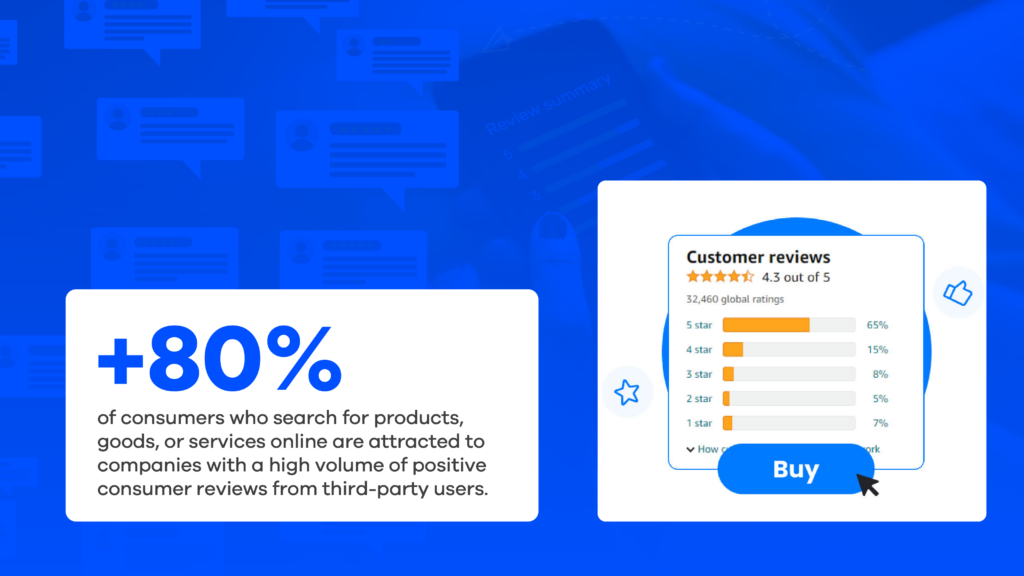
Monitor and Respond to Customer Questions
Quickly addressing questions not only helps individual customers but provides valuable information for future shoppers. This engagement signals to Amazon that you’re an attentive seller.
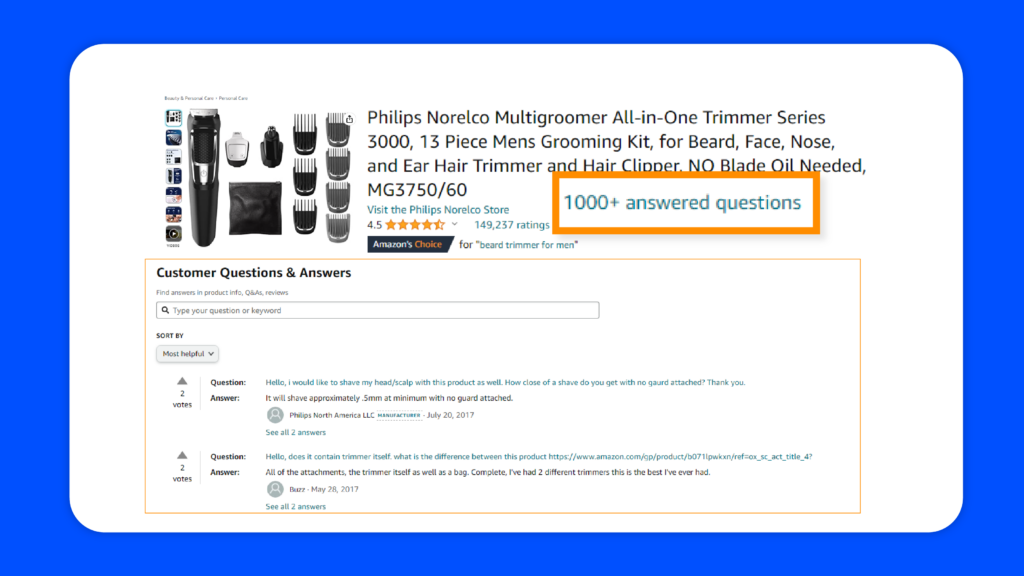
Price Competitively
Keep your pricing competitive to attract more customers. Monitor your competitors’ pricing and consider factors like seasonal demand and promotions.
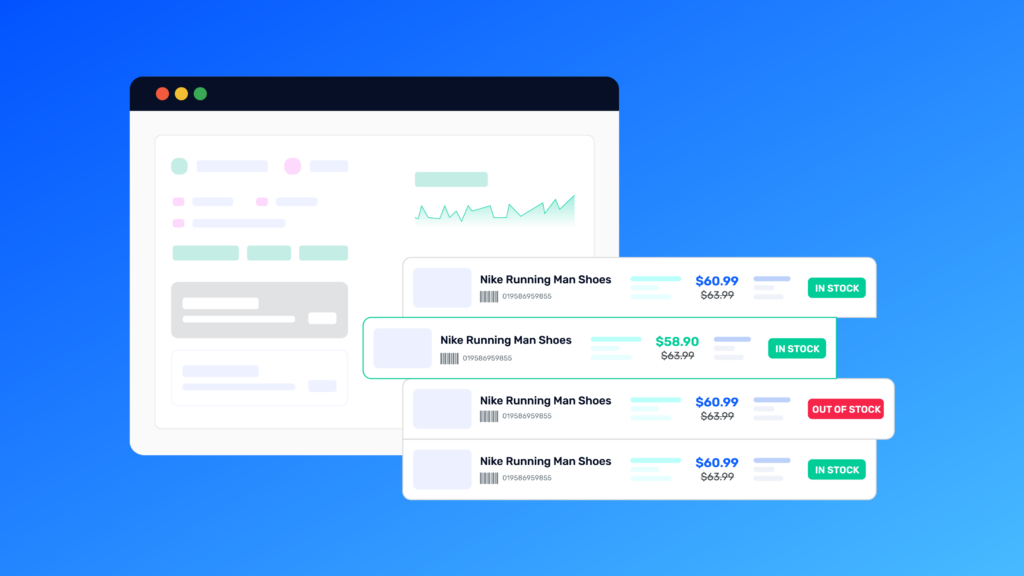
Use Amazon’s A+ Content
For brand-registered sellers, A+ Content provides premium listing capabilities with rich media and enhanced descriptions.
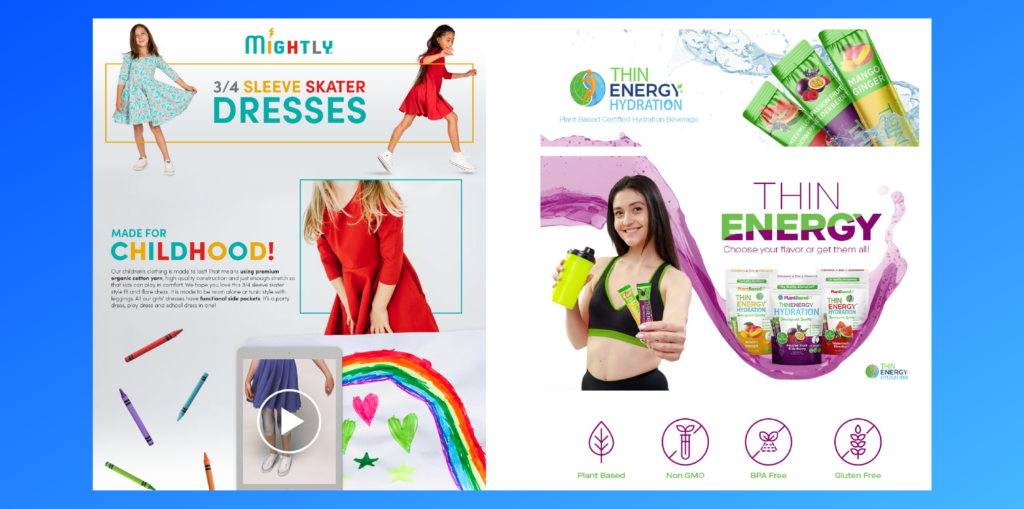
Stay Current with Amazon’s Algorithm Changes
Amazon regularly updates its search algorithm. Work with an Amazon agency or management partner who stays current with these changes to maintain visibility.

Analyze Performance Metrics
Regularly review key performance indicators like session count, conversion rate, and search term data. Use Amazon’s analytics tools to identify improvement opportunities.
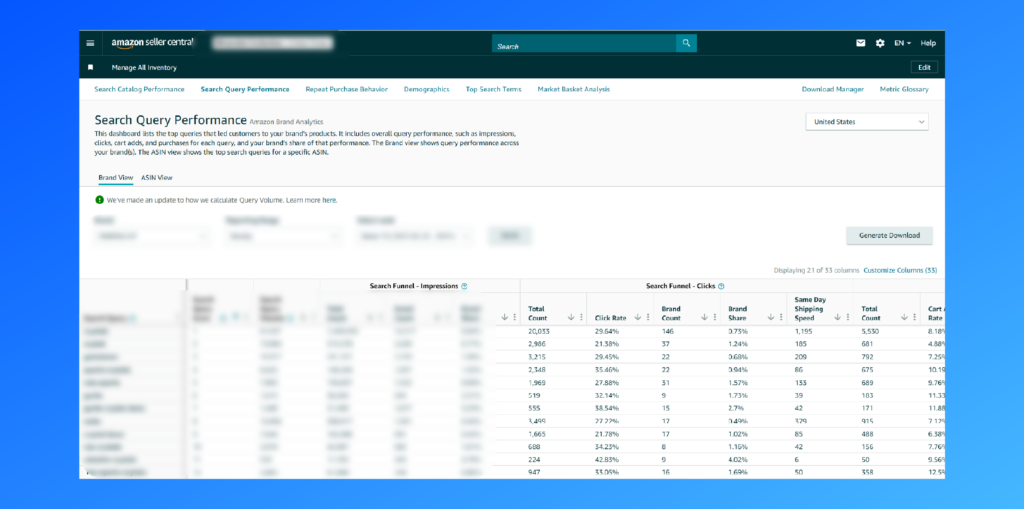
Run Promotions and Deals
Consider running promotions, deals, or discounts to increase visibility and sales. This can also help in gaining initial reviews for new products.

Mobile Optimization Matters
Over 60% of Amazon shoppers use mobile devices. Ensure your listings display effectively on smaller screens by using scannable bullet points and mobile-friendly images.

Avoid Keyword Repetition
Amazon’s algorithm doesn’t reward repetition of the same keywords across your listing. Instead, use this strategy:
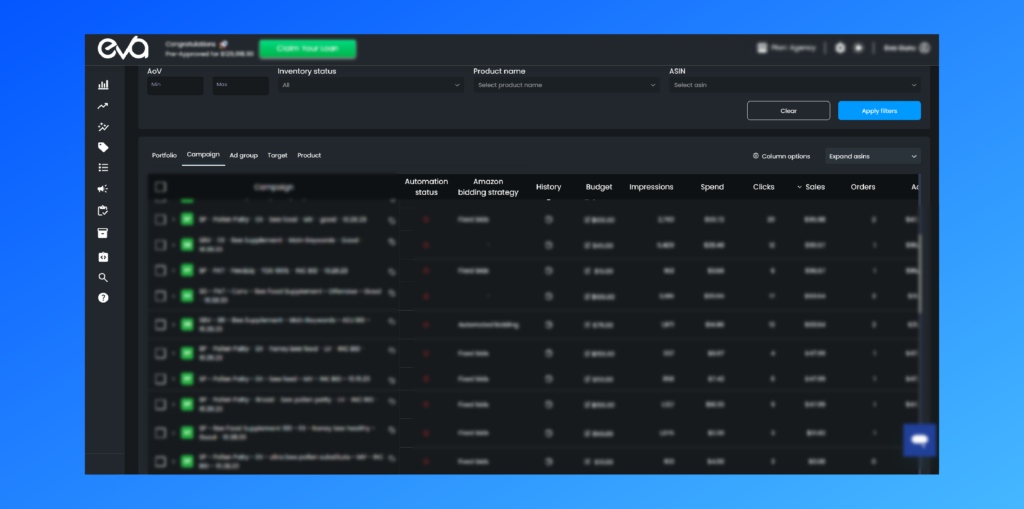
Strategic Placement: Position primary keywords in the title and distribute variations across bullet points and description.
Use Synonyms and Variations: Instead of repeating identical terms, incorporate synonyms and variations to capture a wider range of search queries.
Natural Language Priority: Write for customers first, algorithms second. Your content should read naturally while incorporating relevant search terms.
Backend Optimization: Use the backend search terms field for additional keywords that don’t fit naturally in your visible content.
Amazon Quick Start Style Guide
| Guideline Area | Details | Key Points |
|---|---|---|
| Product Title Formatting | How to structure product titles effectively. | Include brand, product type, key features, size/quantity. Avoid promotional language. |
| Image Requirements | Standards for product images. | High resolution, white background for main image, multiple angles and usage scenarios for additional images. |
| Bullet Points and Descriptions | Crafting effective product features and detailed descriptions. | Highlight features and benefits in bullet points. Provide comprehensive product information in descriptions. |
| Keyword Optimization | Use of keywords in listings. | Integrate relevant keywords naturally. Avoid stuffing and repetition. |
| Compliance with Amazon Policies | Adherence to Amazon’s selling policies. | Ensure product safety, authenticity, and respect intellectual property laws. |
| Pricing and Inventory | Guidelines for pricing and inventory management. | Keep prices competitive, update inventory regularly. |
| Customer Engagement | How to interact with customers? | Encourage and respond to reviews, answer questions promptly. |
| Mobile Optimization | Ensuring listings are mobile friendly. | Optimize listings for easy viewing on mobile devices. |
| Avoiding Prohibited Content | What to avoid in listings? | No offensive language, adult content, or unsubstantiated claims. |
Why Partner With Eva
In 2025, partnering with an all-in-one AI services provider gives Amazon sellers a huge head start
Here’s how:
- E-commerce insiders offer a peek inside Amazon’s algorithms
- Expert insights ensure adherence to Amazon’s policies
- Advanced AI tools offer efficient, data driven amazon listings optimization.
- Time saving integrations allows sellers to focus on product development
- Eva also crafts AI optimized, targeted ad campaigns, crucial for maximizing returns
Mastering Amazon product listing optimization is essential for marketplace success.
Remember that optimization isn’t a one-time effort—it requires ongoing refinement as the marketplace evolves. Stay current with Amazon’s best practices, monitor performance metrics, and continually test improvements to maintain a competitive edge.
Whether you manage your Amazon account in-house or partner with an Amazon ads agency, these optimization principles will help you build listings that not only attract more traffic but convert at higher rates—ultimately driving sustainable growth and profitability on the world’s largest marketplace.








